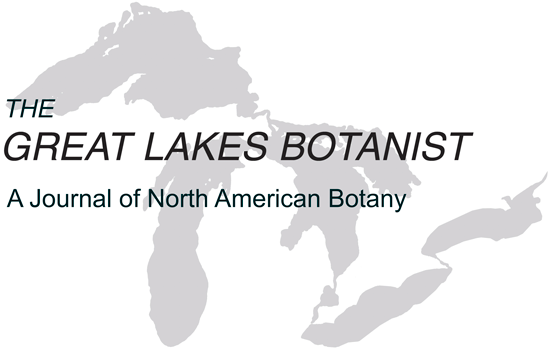ï~~24
THE MICHIGAN BOTANIST
Vol. 39
TABLE 1. Number of taxa of Carex section Ovales by biogeographical region.
Bioregion Number of Taxa
Northwest Morainal (NWM) 18
Northern Lakes (NL) 15
Grand Prairie (GP) 14
Central Till Plain (CTP) 14
Southwestern Lowland (SWL) 11
Blue Grass (BG) 10
Highland Rim (HR) 9
TABLE 2. Distributional Patterns of Carex section Ovales in Indiana
Widespread: Carex cristatella, C. festucacea, C. molesta, C. muskingumensis, C. normalis,
C. tribuloides
Limited to northernmost bioregions-NWM, NL, and GP: Carex alata, C. bebbii, C. longii,
C. projecta
Predominately northern in distribution in Indiana: Carex bicknellii, C. brevior, C. scoparia,
C. straminea, C. suberecta, C. tenera var. tenera
Predominately southern in distribution in Indiana: Carex albolutescens
Predominately found in the Central Till Plain: Carex tenera var. echinodes
Rare: Carex cumulata, C. missouriensis
KEY TO SPECIES OF CAREX SECTION OVALES
FROM INDIANA AND ADJACENT REGIONS.
(The key includes seven species, identified with an *, that have not been found
in Indiana but occur within a four county distance in Illinois, Michigan, or Ohio).
1. Pistillate scales about as long as or longer than mature perigynia, usually concealing the beaks (though not necessarily the bodies), obtuse to acuminate,
but not awned
2. Perigynium beaks flat, winged, and ciliate-serrulate to apex; perigynia
finely granular-papillose, 3-4.5 mm long............. *C. argyrantha
2. Perigynium beaks cylindric, unwinged, and more or less entire for 0.4
mm or more from apex; perigynia smooth, usually 4.5-6.5 mm long.................................................... *C. p raticola
1. Pistillate scales (awns, if any, excluded) shorter than the perigynia at least in
the middle portions of the spikes, the apical portion narrower than the beaks
and not completely covering them, awned in some species
3. Pistillate scales in the middle or lower portions of the spikes acuminate
with a subulate tip or awned.
4. Perigynia 2.6-4 times as long as wide; the bodies lance-ovate to
lanceolate, 0.9-2 mm wide........................to couplet 15
4. Perigynia less than 2.5 times longer than wide; the bodies narrowly
ovate, ovate, broadly elliptic, circular, or obovate, 1.8-3.9 mm wide.
5. Larger perigynia (5.8-) 6-7.1 mm long, with beaks 2-2.8 mm
long; pistillate scales with the acuminate-awned apex white-hya
0


